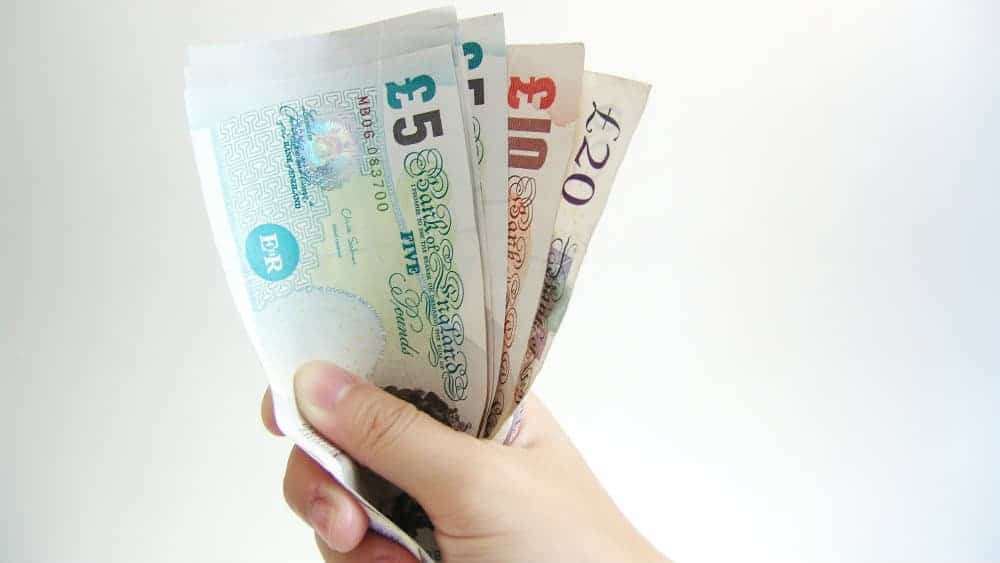Every quarter, investment platform A J Bell produces a report into UK dividends (the regular cash payments paid to shareholders). The latest Dividend Dashboard is here. I look forward to this document, because these cash payments are a vital part of investors’ returns. In fact, they account for up to half of the long-term returns from UK stocks. But currently, just a handful of stocks pay the majority of UK-listed shares’ dividends.
The FTSE 100’s dividend Goliaths
A J Bell forecasts that 2021 dividends from FTSE 100 members will reach £84.1bn. Not all Footsie companies pay dividends, though most do. And in a world starved of income, I rely on these payments to boost my passive income. But A J Bell warns that the Footsie’s payouts are highly concentrated. Just 10 mega-cap companies will pay £46bn of the FTSE 100’s forecast total of £84.1bn. That’s 54.6% of the whole. Thus, the other 91 FTSE 100 members (one share is dual-listed) account for just 45.4% or £38.1bn.
As a value investor keen on passive income, I’m drawn to shares paying bumper dividends. Here are the 10 FTSE 100 stocks with the biggest payouts:
| Company | 2021 dividend* | Dividend yield | Dividend cover | Cut since 2011? |
| Rio Tinto | £10.8bn | 17.8% | 1.28x | 2016 |
| British American Tobacco | £5.0bn | 8.1% | 1.43x | No |
| Royal Dutch Shell | £4.7bn | 4.2% | 2.86x | 2020 |
| BHP Group | £4.6bn | 11.3% | 1.03x | 2016 & 2020 |
| GlaxoSmithKline | £4.0bn | 5.7% | 0.95x | No |
| Unilever | £3.7bn | 3.6% | 1.31x | No |
| Anglo American | £3.5bn | 9.5% | 1.94x | 2015, 2016 & 2020 |
| HSBC | £3.4bn | 4.4% | 2.22x | 2019 & 2020 |
| BP | £3.1bn | 5.1% | 2.82x | 2011 & 2020 |
| AstraZeneca | £3.1bn | 2.5% | 1.34x | No |
| Total | £46.0bn | 7.2% |
*Estimates from A J Bell
As you can see, five of these 10 dividend heroes pay out under £4bn a year. The real heavyweights lie in the top five, with payments of £4bn at GlaxoSmithKline to an enormous £10.8bn at Rio Tinto. It’s worth noting that two of these stocks have very low dividend cover. In particular, GSK’s earnings don’t even cover its current payout, while cover is just 1.03 times at BHP Group.
Now for the bad news: these payments aren’t guaranteed, so can be slashed or stopped at will. Indeed, these 10 companies have cut dividends a total of 11 times since 2011. The worst offenders are the energy companies (BP and Royal Dutch Shell), global miners (Rio Tinto, BHP and Anglo American) and mega-bank HSBC. Also, history suggests that very high yields (say, around 10%+) tend not to persist. Thus, the very high yields at Rio, BHP and Anglo may not be sustainable.
This is not my portfolio
I love dividends and want my share of this £46bn (and already own GSK). However, I would not build an entire portfolio solely from these 10 dividend stocks. Why? Because it would be concentrated in too few stock-market sectors. The list contains three mining stocks, two energy companies and two healthcare businesses. It also includes a bank, a tobacco firm (British American Tobacco) and a leading supplier of consumer goods (Unilever). A portfolio this concentrated might be very volatile, with large valuation swings. And mining and energy stocks are notoriously volatile, thanks to sudden movements in the prices of energy and metals.
However, as an income portfolio, these 10 stocks would produce a bumper income. The average dividend yield comes to 7.2% a year, which is 72 times the Bank of England’s base rate of 0.1% a year. It’s also 3.1 percentage points higher than the FTSE 100’s forecast dividend yield of 4.1% a year. Nevertheless, I would prefer to spread my risk wider than these just 10 stocks!








